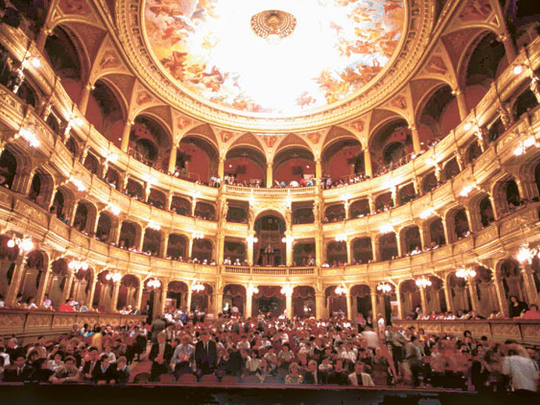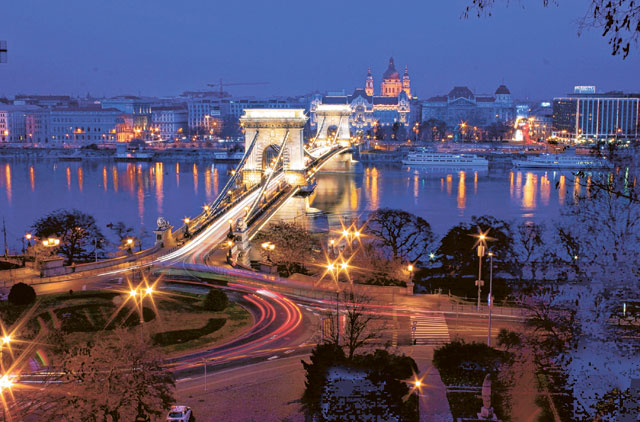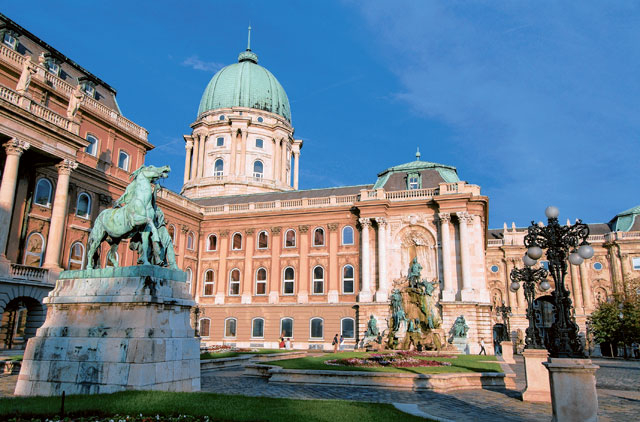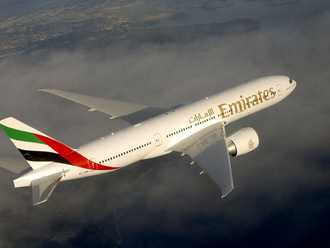
Need an invigorating bath? It's time to head to Budapest. Blessed with more than 120 natural hot springs, the Hungarian capital is famous for being one of the largest spa cities in the world.
Budapest is actually two cities divided by the majestic Danube — the hilly and picturesque Buda on the west bank of the river, and the flat and commercial Pest on the other.
It is an ideal destination for tourists in summer but to visit Budapest during the middle of winter and come back with fond memories is a compliment to the city's rich cultural heritage.
To state the obvious, the first thing that hits me is that it's cold. The average temperature during my visit in mid-January — when Qatar Airways launched its new route to the Eastern European city — ranged from 2°C to 6°C. The trick, of course, was to dress in layers to stay warm, which is important as you don't want the biting cold to distract you from appreciating the beautiful Art Nouveau architecture dotting the urban landscape.
Hats off to the chill
What is perhaps a way of life for people living in cold weather was a novel experience for me — put the layers on outdoors and peel the layers off indoors. Although it was a bit of a challenge to keep track of gloves, hats and mufflers. I often found strangers running after me, holding the black woollen hat that I had dropped.
Having never lived in a city which offers electric trams as a form of public transport, I stopped and delighted in their appearance each time the yellow metal snake rattled by me on the streets. The vast tram network offers a fast and dependable way to get around the city.
Our trip got off to a scrumptious start. The First Strudel House of Pest (Elso Pesti Rétesház Kávéház), nestled in a historic building on a quiet street of Budapest, gives pastry connoisseurs the taste of a unique Hungarian tradition dating to the 15th century. Chef Adam Hatvani demonstrates how the strudel with fruit or vegetable fillings is prepared.
The dough is pulled and stretched over a table covered with a cloth until it's thin as parchment paper — you should be able to read a newspaper through it. The edges hanging off the table are trimmed, the filling is spread over the dough which is rolled over, transferred into a baking dish and placed in the oven. After half an hour, we eat the strudels with coffee. Pure pleasure!
Calorie-burning sights
To walk off the extra calories, embark on a walking tour of Pest. Starting at St Stephen's Basilica (displaying the mummified fist of Stephen, the first king of Hungary), pass by the former Post Savings Bank (bearing colourful tiles and folk motifs), and then stop for a panoramic view of the city on the terrace of Hotel President.
There's a helicopter on the roof which is used to ferry the rich and famous guests from the airport. The next day, it was drizzling as we climbed onto a horse carriage in the castle district in Buda. Our guide Gergely Szabó points to a building and says, "It's a new building".
Considering that most buildings in this area date from the 17th century, by "new", he means it's just 100 years old.
The cobblestone alleyways give this part of the city a distinct identity. While Pest is buzzing with people, Buda wears an intimate and romantic ambience. It also offers a great view of Pest from the Fishermen's Bastion.
Exhausted after a couple of days of hectic sightseeing, I came to the spa element of the trip, soaking in the hot water at the Szechenyi (SAY-chenni) Bath & Spa. It's bliss as the hot water, containing sodium, calcium, magnesium and sulphates, soothed weary muscles. Szabó says it's natural among Hungarians to ask each other, "Have you had a bath today?" It's clear why a bath in thermal water comes highly recommended — it's stimulating and energising. So go on, have a bath in Budapest this winter.
What to do:
- River cruise
To see the city from both land as well as water, hop on to River Ride's amphibious vehicle for a two-hour trip costing roughly €30 (Dh152). Starting from Roosevelt Square heading north to the Parliament, the route covers Alkotmany Street, Heroes Square, the Royal Castle and the Citadella. Use the ride to shortlist the iconic landmarks you would like to visit at leisure.
- Have a bath
Built in 1913, Szechenyi Bath & Spa is a thermal complex offering spa and wellness treatments in several indoor and outdoors pools, filled with natural thermal water. (H-1146 Budapest, Állatkerti krt 11.)
- A taste of culture
For a classical music concert, visit the Palace of Arts which houses the shoebox-shaped Béla Bartók National Concert Hall. The gem of the concert hall is the five-manual and 89-register, so-called symphonic organ with almost 7,000 pipes. For ballet and opera, head to the Hungarian State Opera House, built in Neo-Renaissance style featuring elements of baroque.
- Shopping
The largest indoor market in the city, the Great Market Hall in the 9th district, is the best place to pick up the famous Hungarian paprika powder and other foodstuffs. It also has a wide selection of Hungarian embroidery and other art and craft products.
FLY: Qatar Airways - From Doha via Bucharest, from Dh2,680










